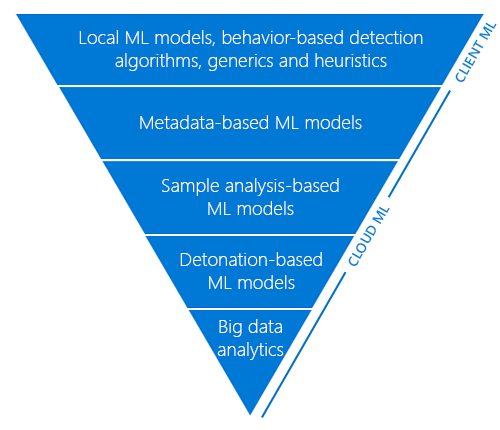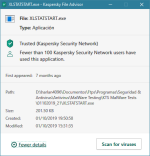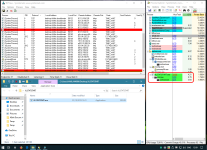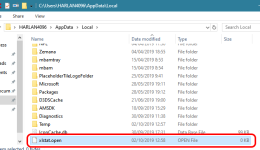Andy Ful
From Hard_Configurator Tools
Thread author
Verified
Honorary Member
Top Poster
Developer
Well-known
- Dec 23, 2014
- 8,968
silversurfer posted the example of advanced multistage malware:

 malwaretips.com
malwaretips.com
Here is a fragment from Microsoft article about WD protection which can fight such malware:
"
I put here three paragraphs from this text into three points.
The first point is interesting because it is related to actions made by WD offline protection. It also clearly states how works the behavior monitoring engine:
"behavior monitoring engine in the client detects one of the more than 500 attack techniques, information like the process tree and behavior sequences are sent to the cloud, where behavior-based machine learning models classify files and identify potential threats."
The third point is mostly related to Windows E5 (except some ASR features).

Microsoft Spots Nodersok Malware Campaign That Zombifies PCs
A new fileless malicious campaign, dubbed Nodersok by Microsoft Defender ATP Research Team researchers who discovered it, drops its own LOLBins to infect Windows computers with a Node.js-based malware that will turn the devices into proxies. Unlike other fileless malware attacks that only use...
 malwaretips.com
malwaretips.com
Here is a fragment from Microsoft article about WD protection which can fight such malware:
"
- Machine learning models in the Windows Defender Antivirus client generically detects suspicious obfuscation in the initial HTA file used in this attack. Beyond this immediate protection, behavioral detection and containment capabilities can spot anomalous and malicious behaviors, such as the execution of scripts and tools. When the behavior monitoring engine in the client detects one of the more than 500 attack techniques, information like the process tree and behavior sequences are sent to the cloud, where behavior-based machine learning models classify files and identify potential threats.
- Meanwhile, scripts that are decrypted and run directly in memory are exposed by Antimalware Scan Interface (AMSI) instrumentation in scripting engines, while launching PowerShell with a command-line that specifies encoded commands is defeated by command-line scanning. Tamper protection in Microsoft Defender ATP protects systems modifications that attempt to disable Windows Defender Antivirus.
- These multiple layers of protection are part of the threat and malware prevention capabilities in Microsoft Defender ATP. The complete endpoint protection platform provides multiple capabilities that empower security teams to defend their organizations against attacks like Nodersok. Attack surface reduction shuts common attack surfaces. Threat and vulnerability management, endpoint detection and response, and automated investigation and remediation help organizations detect and respond to cyberattacks. Microsoft Threat Experts, Microsoft Defender ATP’s managed detection and response service, further helps security teams by providing expert-level monitoring and analysis."
I put here three paragraphs from this text into three points.
The first point is interesting because it is related to actions made by WD offline protection. It also clearly states how works the behavior monitoring engine:
"behavior monitoring engine in the client detects one of the more than 500 attack techniques, information like the process tree and behavior sequences are sent to the cloud, where behavior-based machine learning models classify files and identify potential threats."
The third point is mostly related to Windows E5 (except some ASR features).
Last edited:







